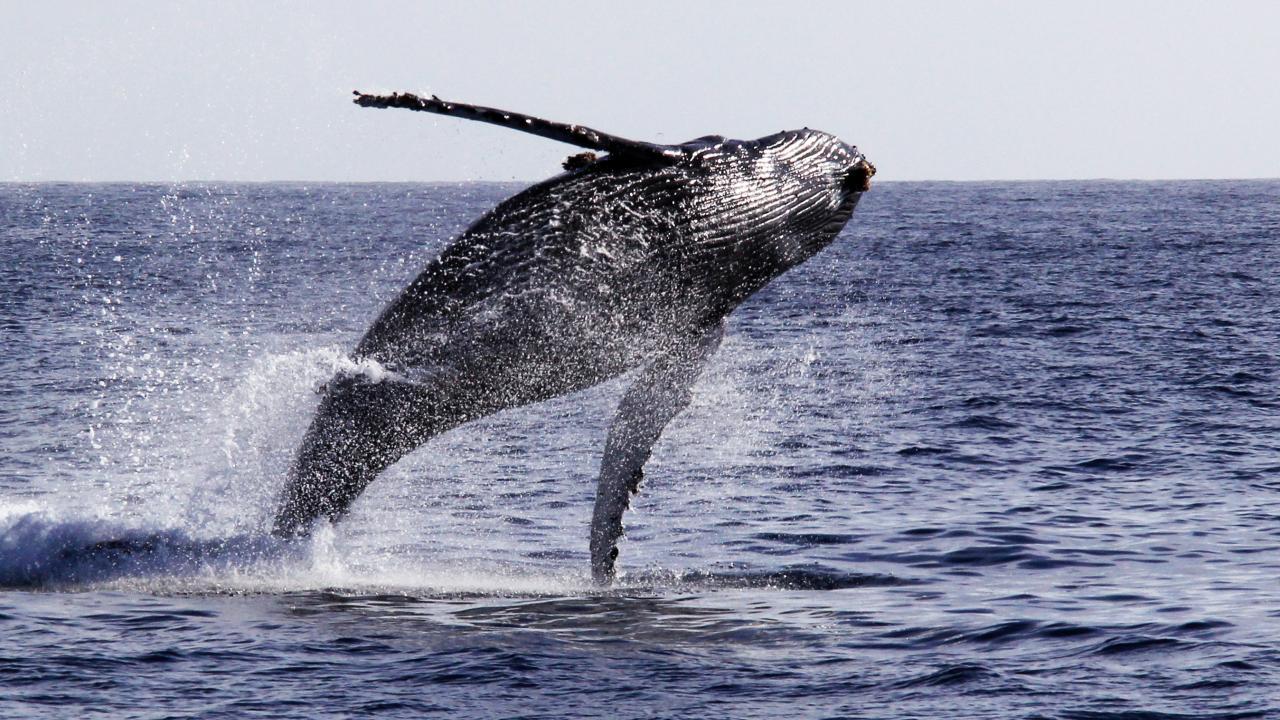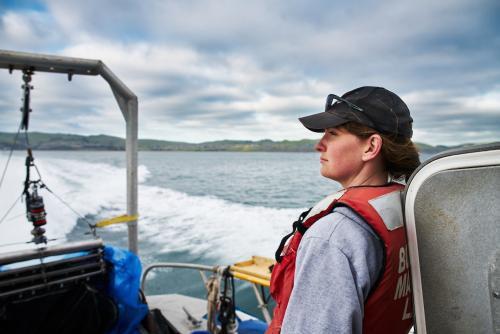
To Save California’s Whales, Put Overlooked Threats Into Policy
A Zero-Mortality Goal for Whales Requires Holistic Policy Approach
Whales are threatened by a variety of human activities off the West Coast of the United States, including fishing, ship traffic and pollution. Overlap between these stressors can compound effects on whale populations, but are rarely addressed by current whale-protection policies in California, according to a study from the University of California, Davis.
The study, published for open access this week in the journal Marine Policy, examines the main causes of death for nine whale species in the California Current Ecosystem, which stretches from British Columbia, Canada, to Baja California, Mexico. The study considered these whales: gray, blue, fin, minke, sei, sperm, North Pacific right and killer.
“We found that oftentimes, people single out fishing or ship strike for their roles in whale mortality,” said co-leading and corresponding author Eliza Oldach, a Ph.D. candidate at UC Davis with the Department of Environmental Science and Policy and the Coastal and Marine Sciences Institute. “But a whole slew of human activities have collided to make the modern ocean a really tough environment for whales to survive. We’re excited about efforts that look broadly to rebuild healthy oceans.”

3 more threats to consider
The report found that five main contributors to whale mortality are currently targeted with relevant policy responses: entanglements, vessel strikes, noise, water quality and marine debris. But three other threats — nutritional stress, disease and predation — need to also be considered to provide a more holistic approach toward managing whale deaths.
“Gray whales migrate over 5,000 miles between their foraging and breeding grounds at either end of the California Current,” said co-leading author Helen Killeen, a Ph.D candidate at UC Davis with the Department of Environmental Science and Policy and the Coastal and Marine Sciences Institute. “Throughout their journey, they must pass through a gauntlet of human activities, all while contending with changes to their environment precipitated by climate change. The best conservation approach for these whales is one that addresses overlapping and interacting stressors that span geographic and jurisdictional boundaries.”

Zero-mortality goal
The study comes as the California Ocean Protection Council aims to develop a plan for achieving zero mortality for whales in the California Current Ecosystem this year. Achieving such a goal requires understanding the key drivers of whale deaths, opportunities for policy change and coordinated management across the ecosystem, the report said.
“In our research, we were inspired by a few cases where people and agencies are already collaborating to develop policies that tackle multiple stressors for whales," Oldach said. "Our paper is intended to highlight that approach and urge other policymakers to think along similar lines.”
The report was led by graduate students from institutions throughout California. Co-authors: Priya Shukla, Nicholas Carter, Cassidy Cooper, Leah Mellinger, Kaiwen Wang, Pernille Sporon Bøving and Nann Fangue of UC Davis; Ellie Brauer of California Polytechnic State University; Jennifer Fields of Cal State Northridge; Alexandra Thomsen of Cal State Monterey Bay; Carl Hendrickson of San Francisco State University; and Anna Neumann of Oregon State University.
The study was funded by the UC Davis Sustainable Oceans: From Policy to Science to Decisions program, a National Science Foundation Research Traineeship.
Media Resources
- Eliza Oldach, UC Davis Department of Environmental Science and Policy, ejoldach@ucdavis.edu, (443) 928-9461
- Helen Killeen, UC Davis Department of Environmental Science and Policy, hjkilleen@ucdavis.edu, (303) 999-1812
- Kat Kerlin, UC Davis News and Media Relations, 530-750-9195, kekerlin@ucdavis.edu